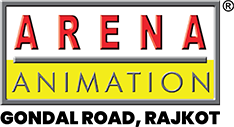Animation and Visual Effects (VFX) are two pivotal elements in the world of digital media and entertainment, often intertwined yet distinct in their own right. Understanding the differences and intersections between the two can help clarify their unique roles and applications.
Animation
Animation involves creating the illusion of movement by displaying a series of still images in rapid succession. Each frame differs slightly from the last, and when played at speed, the sequence creates motion. This technique can be applied to everything from traditional hand-drawn cartoons to complex 3D models.
Key Aspects of Animation:
Creation of Content: Animation is the art of creating content from scratch. Animators bring to life characters and environments, crafting entire worlds with their imagination and tools.
Types: It includes various forms, such as traditional 2D animation, 3D animation, stop motion, and computer-generated imagery (CGI).
Applications: Animation is widely used in feature films, television shows, video games, advertisements, and web series, among other forms of media.
Visual Effects (VFX)
Visual Effects are used to manipulate imagery outside the context of a live-action shot in film making. VFX involves integrating real footage with this manipulated imagery to create realistic-looking environments, characters, or objects that would be too dangerous, costly, impractical, or impossible to capture on film.
Key Aspects of VFX:
Enhancement of Live-Action: VFX is often used to enhance or modify live-action footage. For example, adding explosions, fantastical creatures, or changing backgrounds in movies.
Types: Includes compositing, matte painting, CGI, and motion capture among others.
Applications: Primarily used in movies, television, and video games to create environments, special effects, or characters that cannot be achieved through practical effects.
Intersection and Collaboration
While animation and VFX serve different purposes, they often overlap and collaborate in the production process. For example, a movie might use animation for character creation and VFX to integrate those characters into live-action scenes. Both fields rely on similar software and tools, such as Adobe After Effects, Autodesk Maya, and Cinema 4D, and require a deep understanding of motion, timing, and storytelling.
Choosing a Path
Interest in Creating New Worlds: If you’re passionate about creating characters and telling stories through entirely animated environments, animation might be your calling.
Interest in Enhancing Reality: If you’re fascinated by the idea of blending the real with the impossible and working closely with live-action footage, VFX could be the right path.
Both animation and VFX offer dynamic career opportunities, requiring a blend of creativity, technical skills, and a passion for storytelling. Whether you lean towards animation or VFX, both fields are at the forefront of digital art and technology, pushing the boundaries of what’s possible in film, television, and gaming.


